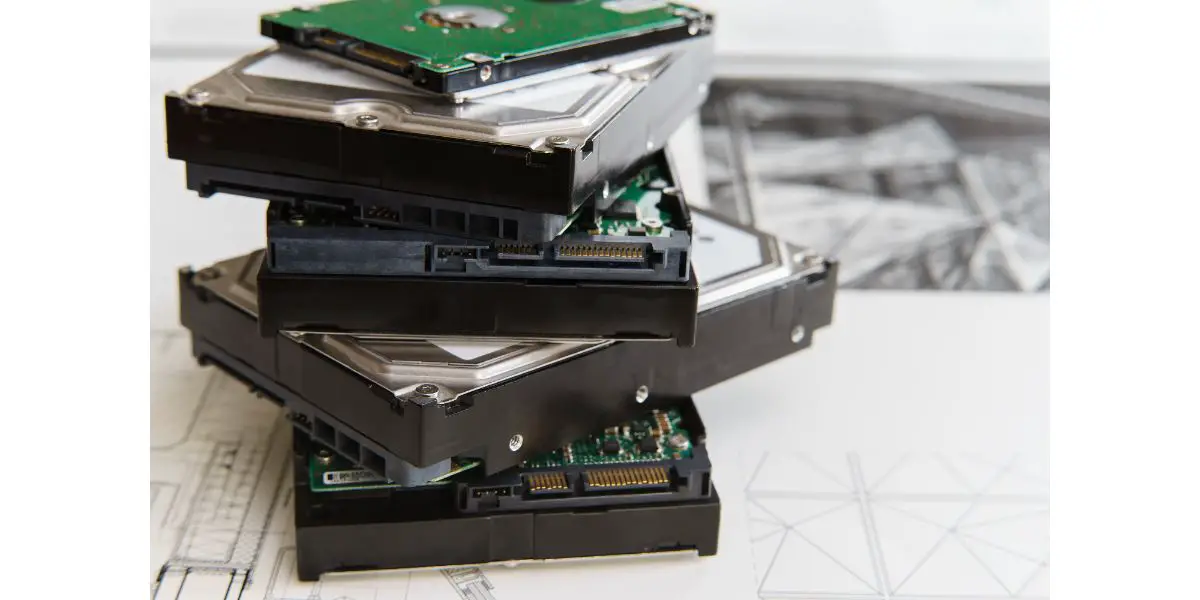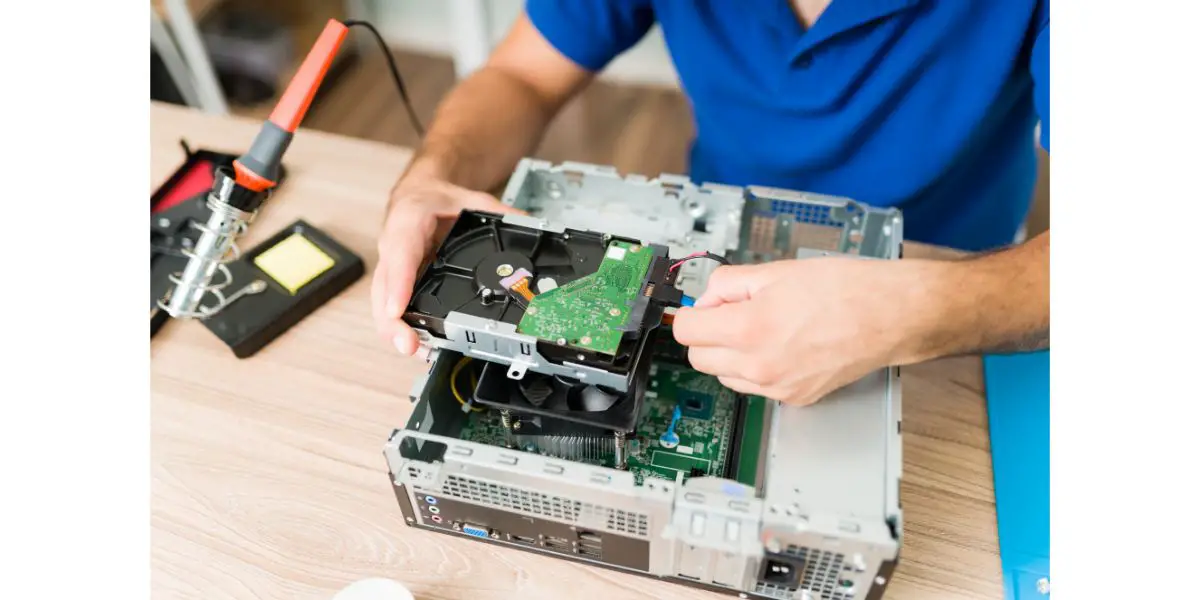Disclaimer: This post may contain affiliate links, meaning we get a small commission if you make a purchase through our links, at no cost to you. For more information, please visit our Disclaimer Page.
Hard drives may be mounted vertically or horizontally; neither orientation will adversely affect their performance or lifespan. However, all drives should be appropriately secured and computers stably positioned. This way, your hard drive will not shake or vibrate when in operation.
Table of Contents
Will Mounting a Hard Drive Vertically Damage It?
On consumer devices, hard drives are most commonly installed horizontally. However, drives can also be mounted vertically.
Mounting a hard drive vertically will not damage it. Drives are designed to be mounted either horizontally or vertically, with any side facing upward or outward. They should, however, be firmly secured to their mounting brackets, so they do not rattle when functioning.
For hard evidence of how safe vertical mounting is, look no further than enterprise solutions, where the practice is common.
Data preservation and integrity are of the utmost importance for large corporations that serve millions of customers. The people managing their servers likely know what they are doing. There is no way they would risk millions in potential damages because of improperly installed hard drives.
The lack of a link between mounting orientation and disk lifespan or data integrity is further reinforced by statements put out by the largest manufacturers of storage solutions today.
What Manufacturers Say About Disk Orientation
According to a statement on Seagate’s official website, “All Seagate and Maxtor-brand hard drives can be fitted sideways or upside down. As long as they are not moved during use and get enough cooling, it is irrelevant in which direction they are mounted.”
Likewise, Western Digital says that “The drive can be mounted sideways, on end, or even upside down as long as the mounting screws are used properly.” They also recommend securing a drive with all four mounting screws to “prevent vibration and provide additional electrical grounding.”
And according to Hitachi Global Storage Technologies Ltd., a “Hitachi Deskstar drive can be mounted with any side or end vertical or horizontal. Do not mount the drive in a tilted position.”
Factors That May Affect Your Choice of Hard Drive Orientation
Hard drives are expensive and sophisticated components that play a critical role in a computer’s operation. As memory devices, their failure can be especially devastating. So it is understandable why people put so much thought and care into their installation and maintenance.
Users, enthusiasts, and engineers all have their pet theories about how drives should be mounted. For instance, many users believe that drive orientation should not be modified after extensive prior use.
Other users believe that mounting drives vertically or horizontally offers particular advantages in avoiding heat build-up and encouraging faster dissipation or that mounting them with the printed circuit board faced downwards reduces dust accumulation.
No doubt, many factors affect a hard drive’s performance and lifespan. While mounting plays a less critical role in determining these outcomes, there are some practical considerations involved in mounting that can affect them. Alternatively, other components of your machine may limit your orientation options.
The factors that may affect your choice of hard drive orientation include the following:
- Case size and mounting options: A computer cabinet’s shape, size, and the location of its hard disk mounting brackets can limit hard drive orientation choice. You will need to work with these limitations to ensure that your drive is properly secured. The only alternative may be to replace your case.
- Heat build-up and dissipation: Hard disks and other components generate heat as they operate. In powerful machines with many drives and top-of-the-line graphics processors, drive placement can have a significant impact on temperatures in your system.
In practice, most users do not have very many internal drives. They need only fix their drives to any secure bracket at a sufficient distance from other components. As long as the drive is firmly fixed and temperatures within their case are reasonable, they should be good to go.
Only users with multiple drives for large storage needs need to pay extra attention to drive placement. A larger case that provides more room for drives and better heat dissipation will help in these cases.
Several well-placed fans within a case will keep temperatures within your case under control. And a liquid cooling solution will make an even greater difference.
For more information on installing multiple hard drives in your machine, refer to this article on our blog. It provides a step-by-step guide on the installation process and all the necessary precautions to take in hard drive installation.
Finally, remember that, eventually, all drives will fail. The following section will discuss some common reasons for premature hard drive failure. As you can see, most of these factors have little to do with the orientation a hard disk is installed in.
Common Reasons for Premature Hard Disk Failure
The most common reasons for hard disks failing before their time have nothing to do with their orientation. Common reasons hard disks fail early in their life cycle include the following:
- Manufacturing errors: Despite the stringent quality control measures followed by most electronic component manufacturers today, a small proportion of devices will always fail. This is why manufacturers have warranties and replacement programs in place. Always see if a failed device is within its warranty period.
- Heat damage: All electronic components are sensitive to heat damage. If your computer’s components overheat for prolonged periods of time, they are vulnerable to failure. Hard drives are no different.
- Humidity: Like heat, humidity is an absolute no-no for electronic components. Any excessive exposure to humid environments can cause hard drives to fail.
- Uneven electricity supply: Computers need to be supplied with consistent and stable power for them to function correctly. Surges or drops in supply can damage individual components, including hard drives. A surge protector is always a good idea, especially when working on a machine used for critical or official tasks.
Conclusion
Hard drives can be mounted vertically or horizontally, with either face turned upward or outward. Be sure to secure hard drives properly before restarting your system, though.


